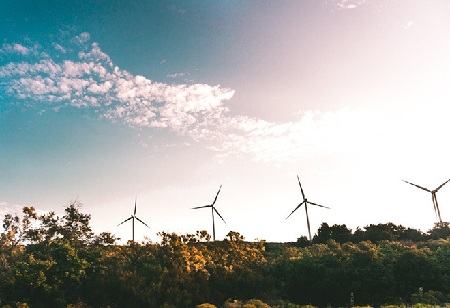The government will cease the electronic reverse auction for renewable energy projects, Indu Shekhar Chaturvedi, joint secretary in the new and renewable energy ministry said on July 14, accepting the industry’s demand.
The renewable energy industry urged the government to do away with the e-reverse auction, saying it led to intense competition and a steep fall in tariffs, which would make some projects unviable.
The e-reverse auction platform was introduced to promote competition to get the best price, as it allowed the bidders to see all the bids in real time. It offered them the option to revise bids, unlike the closed ones where only one bid is submitted.
“I can say with confidence that the reverse auction arrangement has in-principle been decided to be ended; a formal decision will follow soon,” Chaturvedi said at the Confederation of Indian Industry’s (CII’s) ‘India at 2030: A Roadmap for Atma Nirbhar Bharat in Renewable Energy’ conference.
The government’s procurement system would move towards state-specific bids so that tariffs could be pooled, he said.
At the Conference of the Parties, or COP26 as it is better known, in Glasgow in 2021, Prime Minister Narendra Modi raised India’s renewable energy capacity target to 500 gigawatts (GW) by 2030 from 450 GW.
India will need to add an average of 42 GW a year for the next eight years to meet the revised target. “Our targets are huge. What gives us confidence is our past record.
We also must realise that these huge targets will need action that are out of the ordinary,” he said. Chaturvedi said that while the public policy has been supportive, it would be more proactive going ahead.
“Today, all our RE capacity additions come from the private sector. The investment has automatically flowed; the government has not had to make extra extra efforts to attract investment. This points to the strength of the private sector, the bankability of projects, etc. We have a strong contractual framework,” he said. Chaturvedi also said that there was a need for the political and industrial consensus for reliable and consistent supply from the renewable energy industry, which might be expensive in the short term due to the higher cost of battery storage but would be important in the long term. “(Battery) storage costs need to be brought down because going forward, grid integration is going to be an issue. If grid integration has to be smooth, there has to be firmer power available which discoms can buy,” he said.
Wind Energy
Addressing the wind energy industry’s demand for a change in bidding framework, the officer said, “On one hand, we see demand for wind energy and on the other, we see projects which are languishing. This point needs to be recognised and the bidding structure and the old dispensation need to be looked at; we have already done it.”
The government was hoping to launch an initial tender for offshore wind projects over the next three to four months, as most of the preparatory work was done. In June, the government chalked out a plan to bid out 37 gigawatts (GW) equivalent of offshore wind-energy projects till 2029-30.
Hydrogen Mission
Chaturvedi said that the green hydrogen policy was at the “highest stage of approval.” “We hope that in the next couple of months it will be launched.” On February 17, the government announced the first part of the National Green Hydrogen policy.
To boost the green hydrogen manufacturing sector, the government would allow free power transmission to renewable energy units set up by green-hydrogen producers and a power banking facility for 30 days. The industry is awaiting the second round of announcements, hoping for economic incentives.
Solar Rooftop
India’s solar rooftop capacity, which can play a crucial role in meeting the growing demand for electricity, has not taken off as expected. “I admit that solar rooftop capacity additions have been sluggish. We need to work more on that. We have already done a lot of work; a new portal is about to be not launched in the next couple of weeks, which should make things easier,” Chaturvedi said.
He said that the government was also working to ensure that the Pradhan Mantri Kisan Urja Suraksha Evam Utthan Mahabhiyaan, also known as PM KUSUM plan, takes off. The programme supports farmers to set up renewable energy capacity.
“The industry and the ministry need to work more on the decentralized applications of RE we have identified a few more applications; the problem is coordination between the various ministries which need to work together with industries and other stakeholders. We are trying to work on that,” he said.
